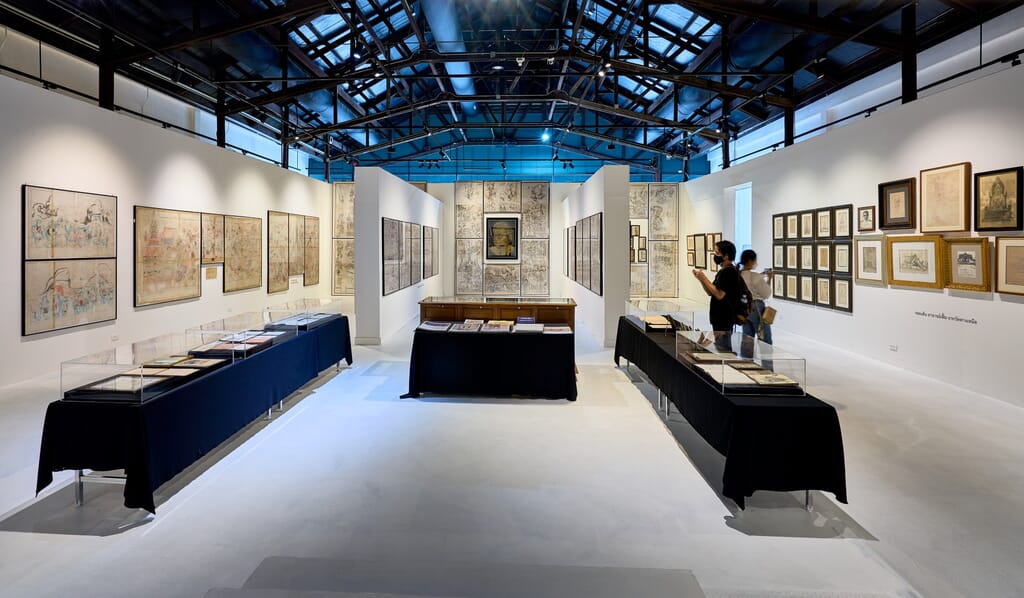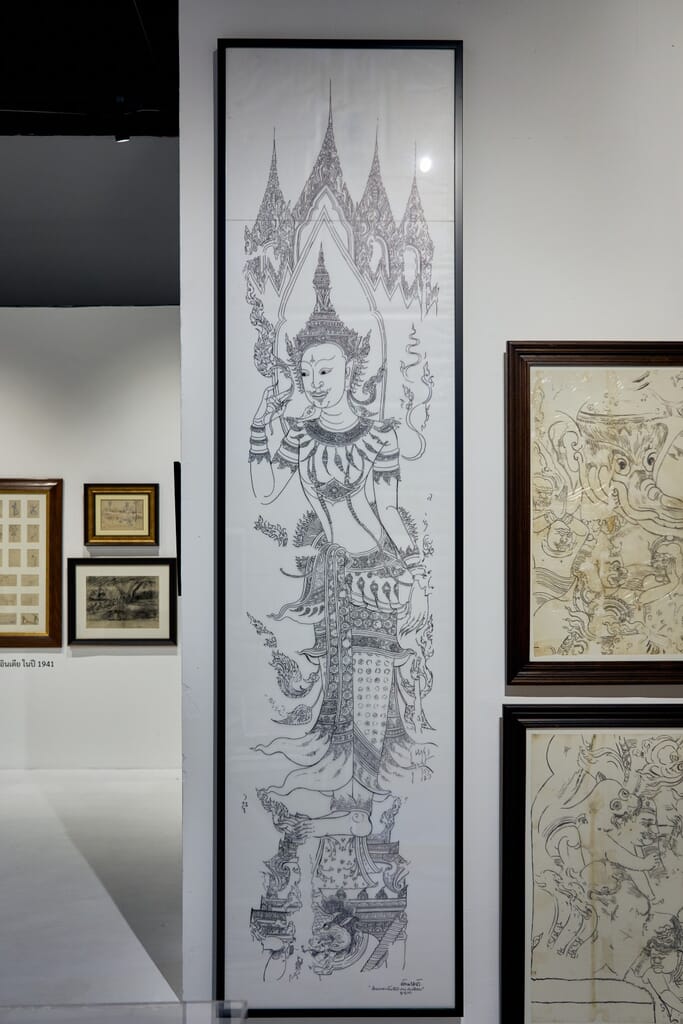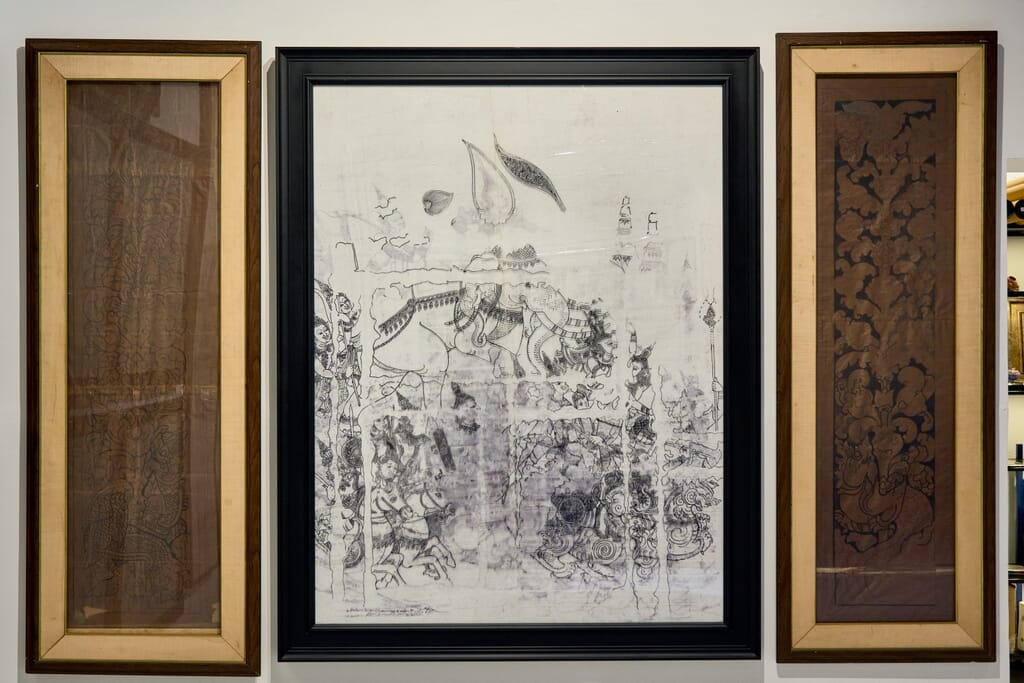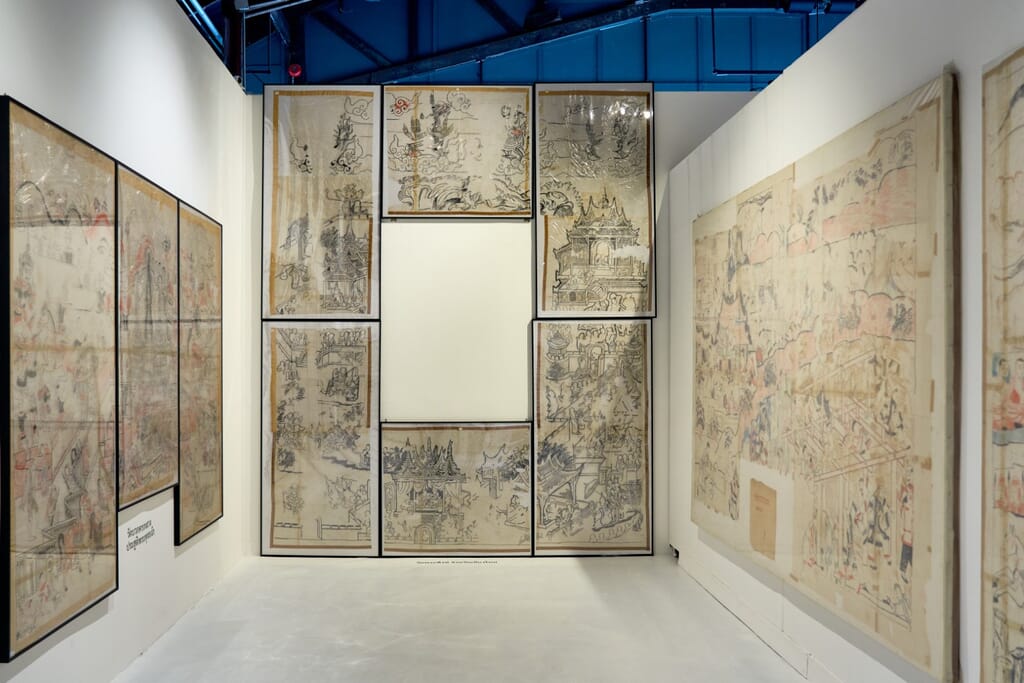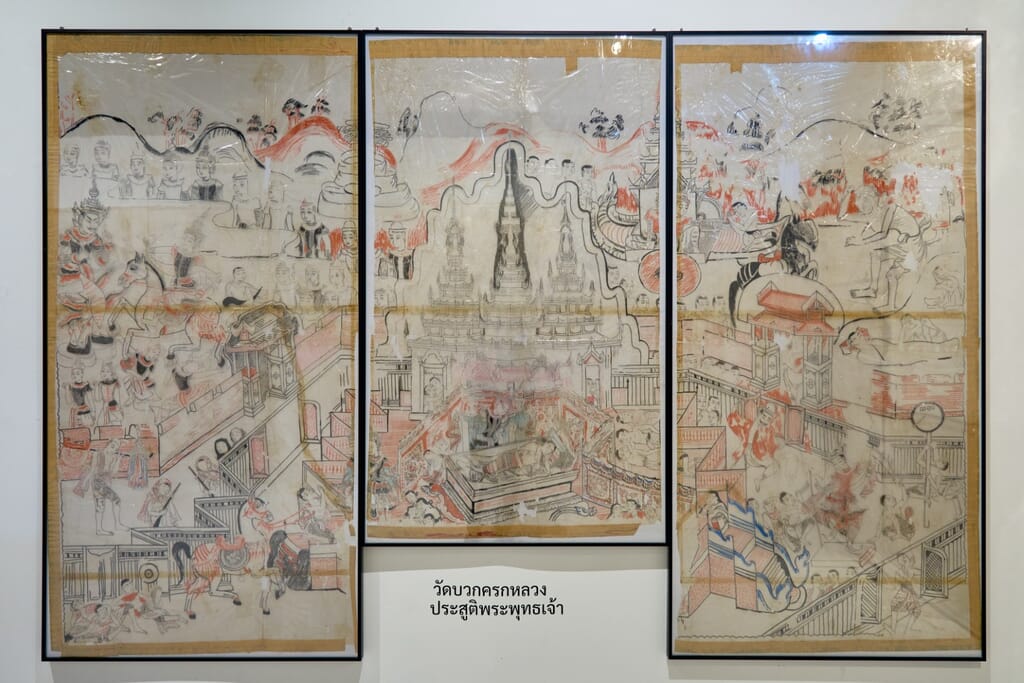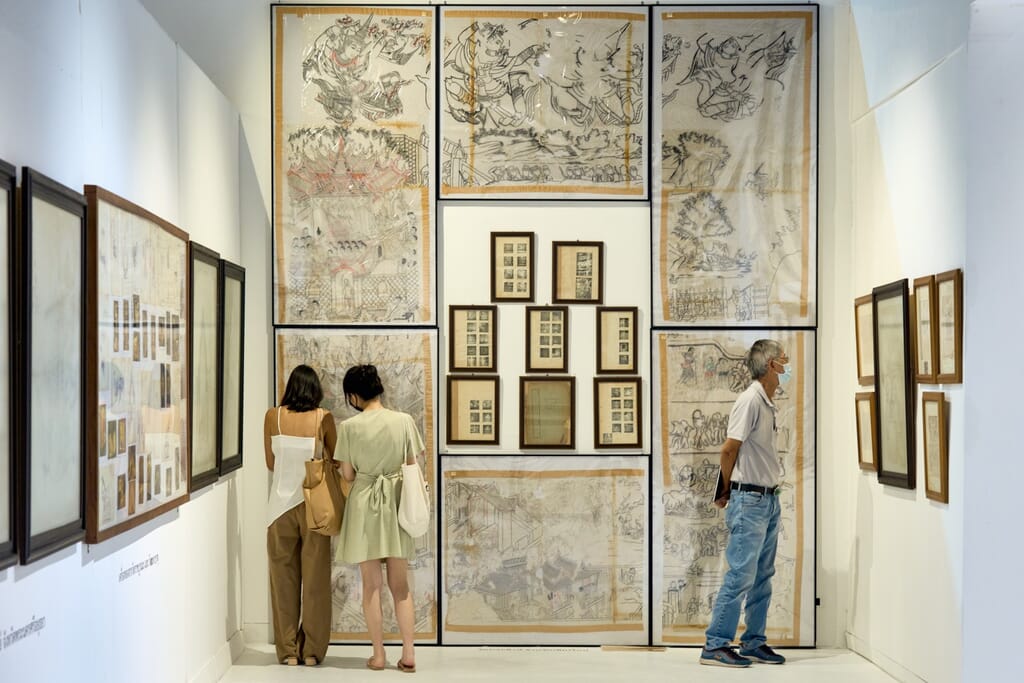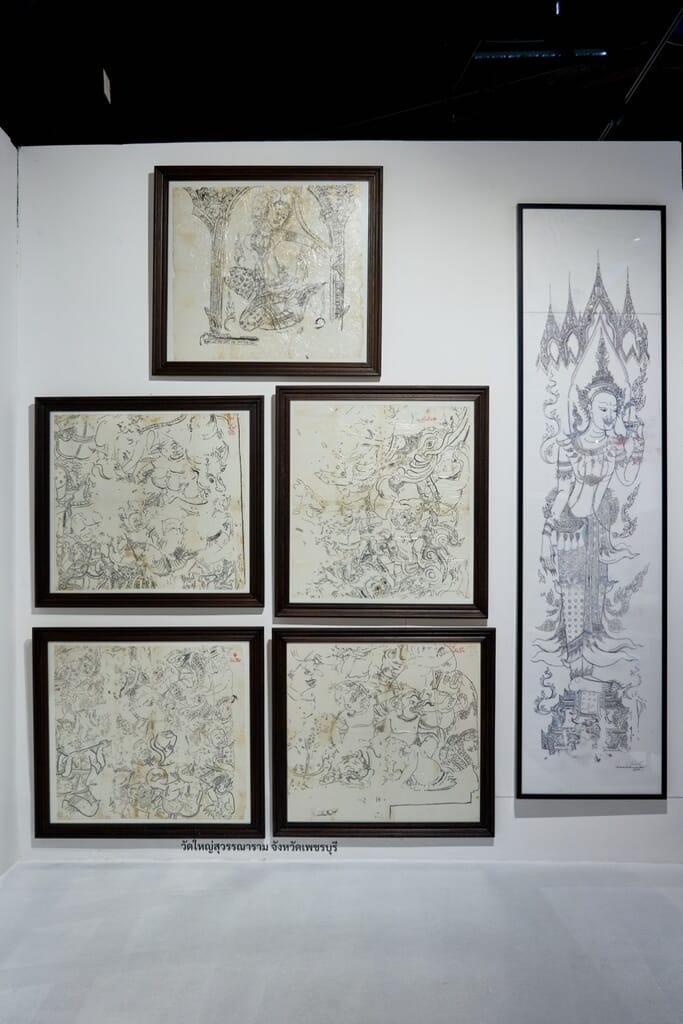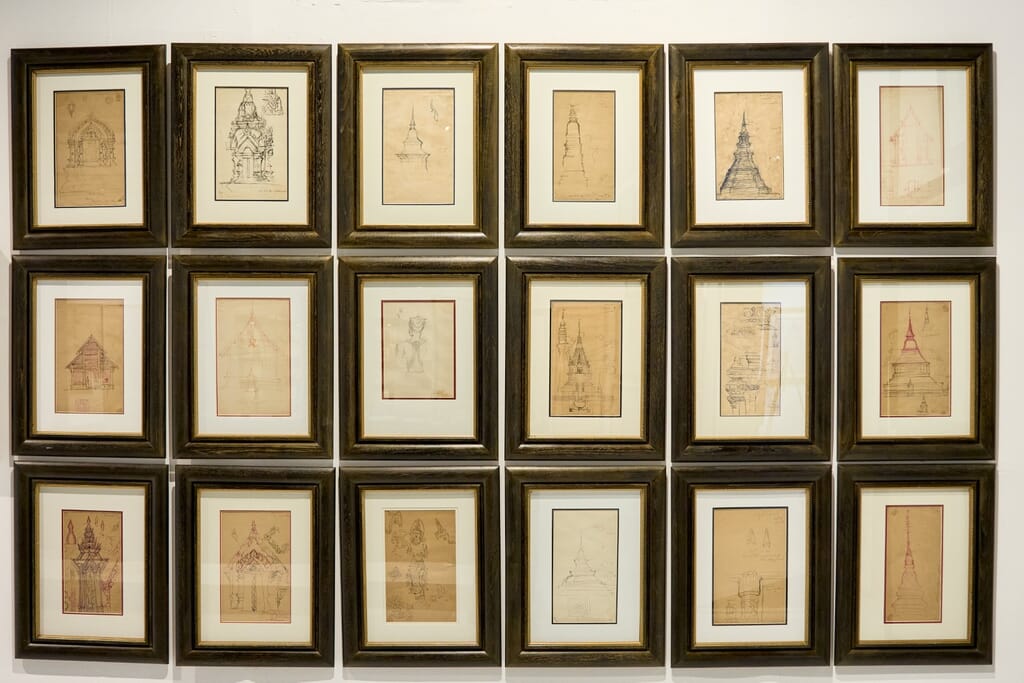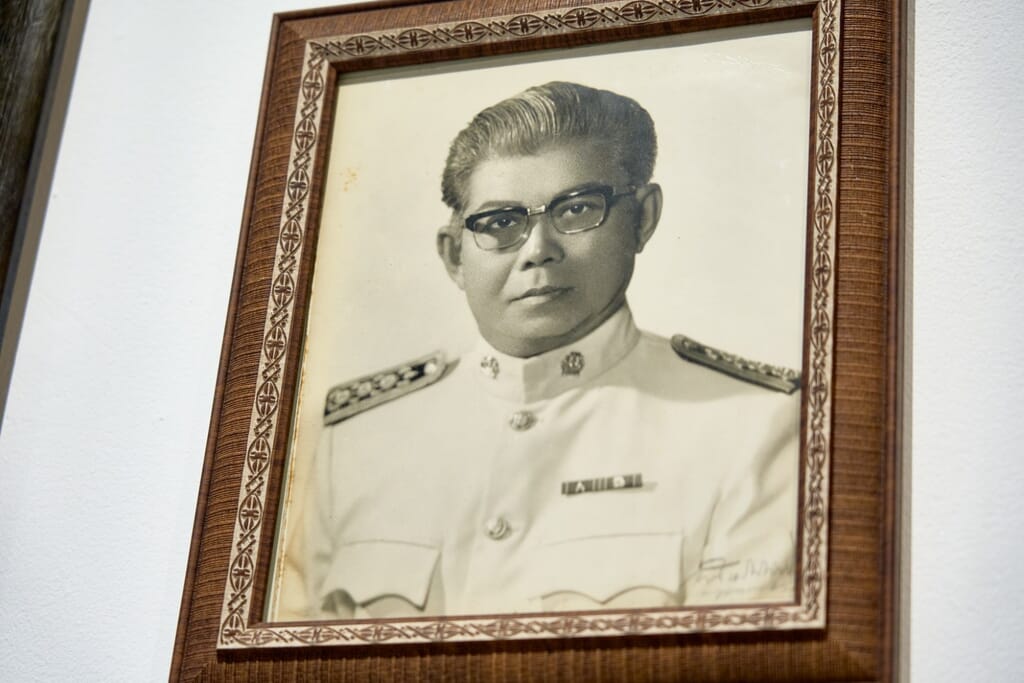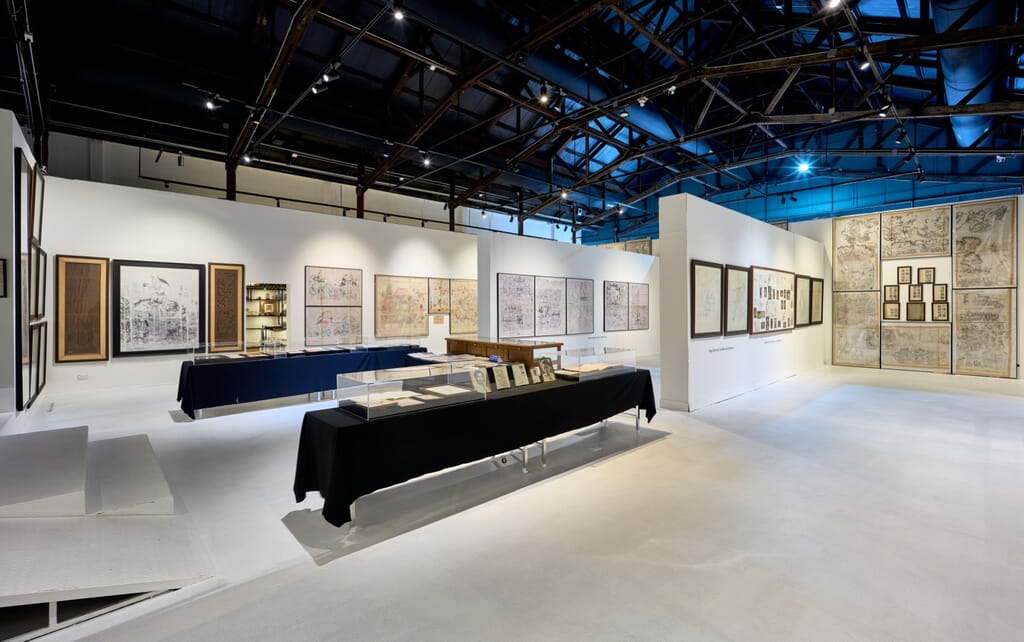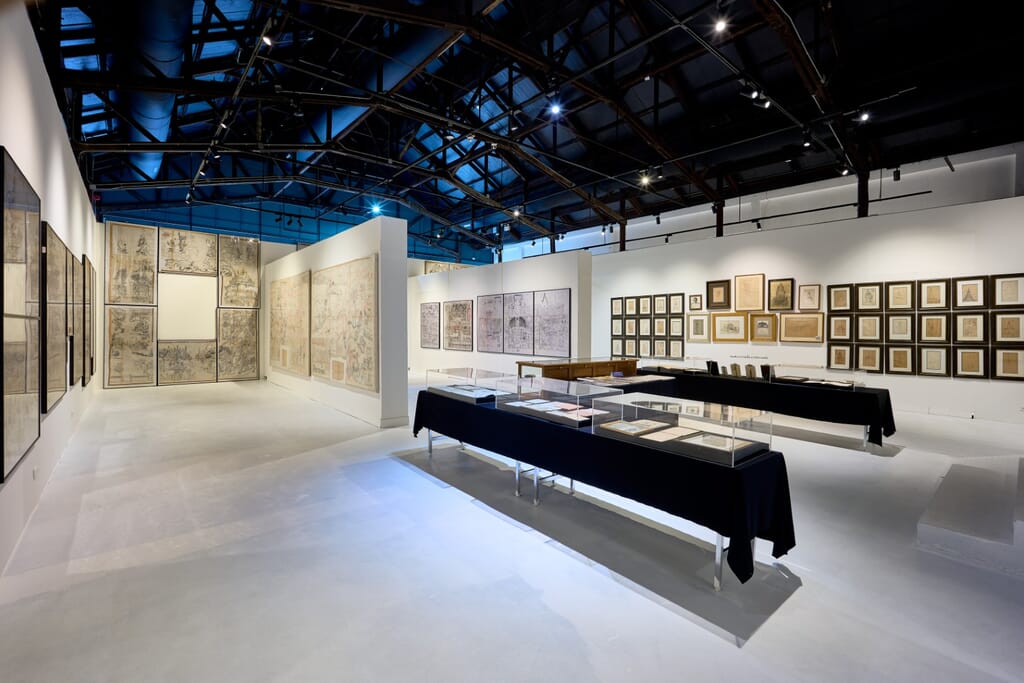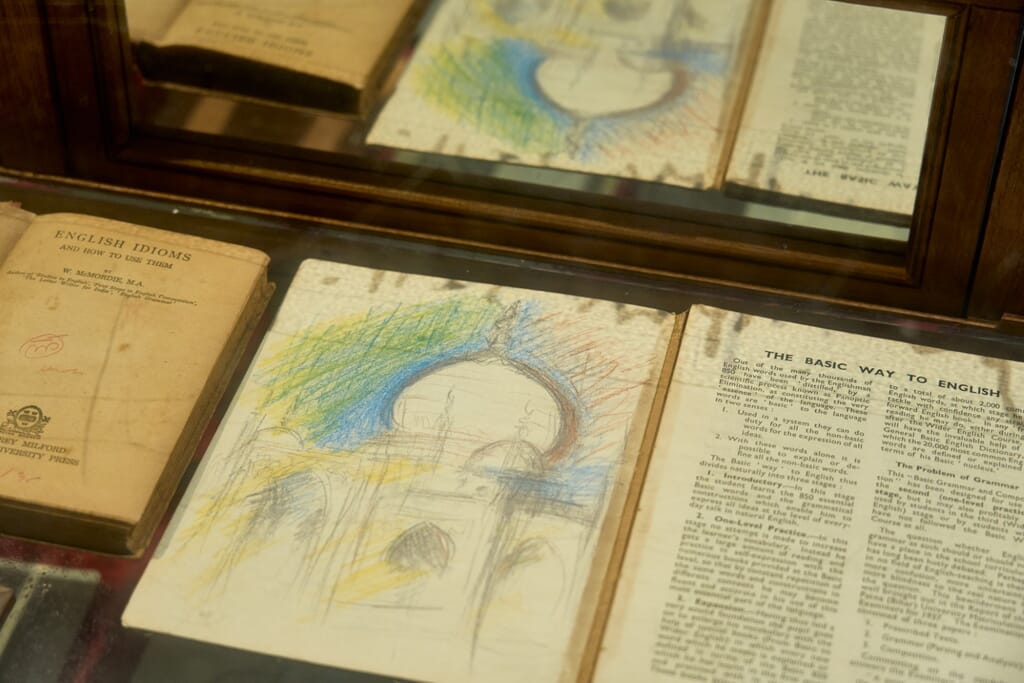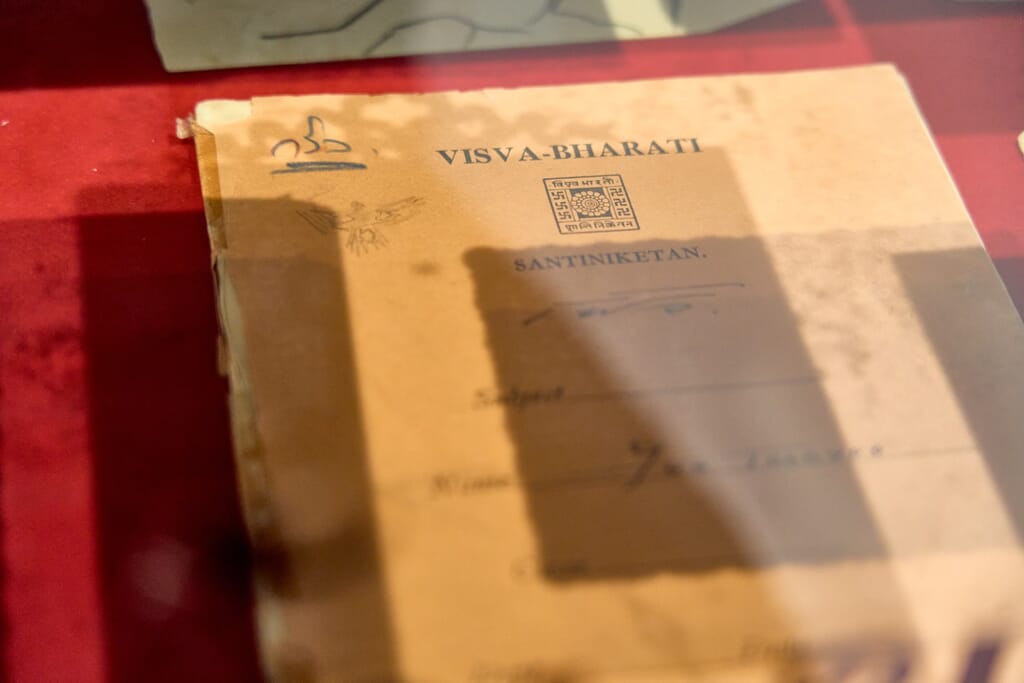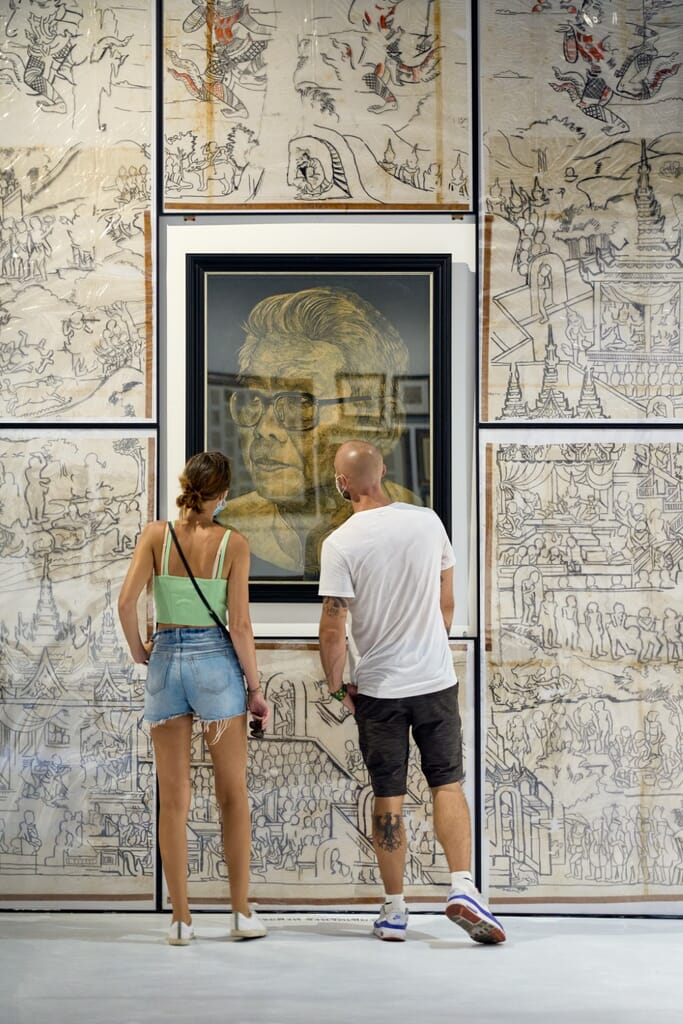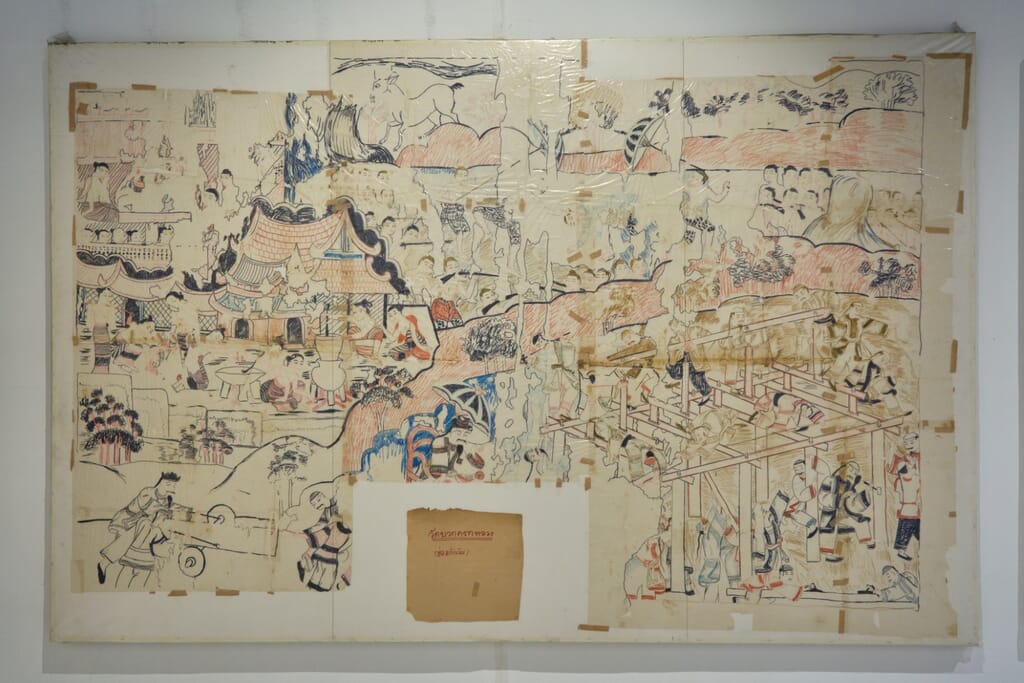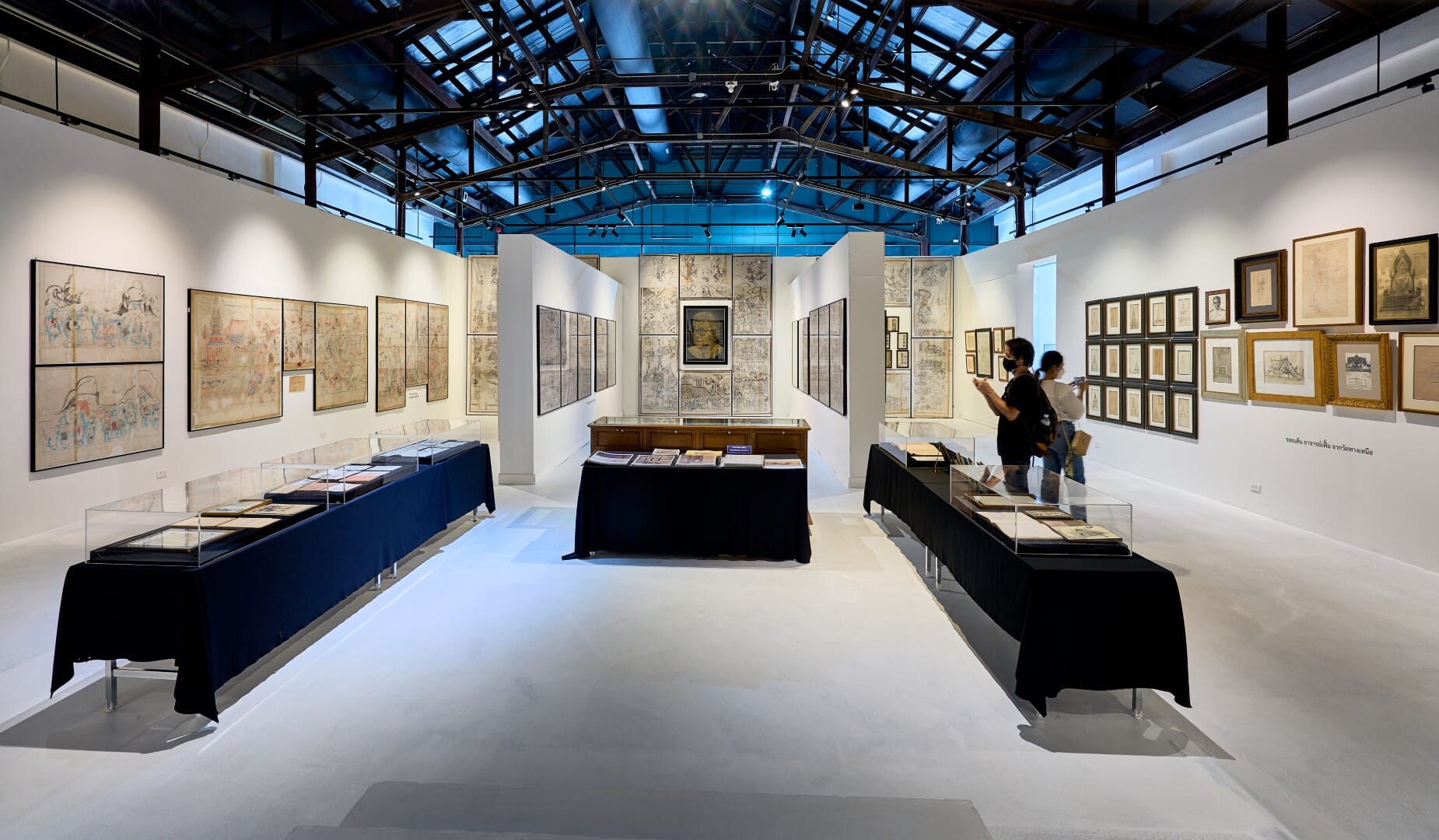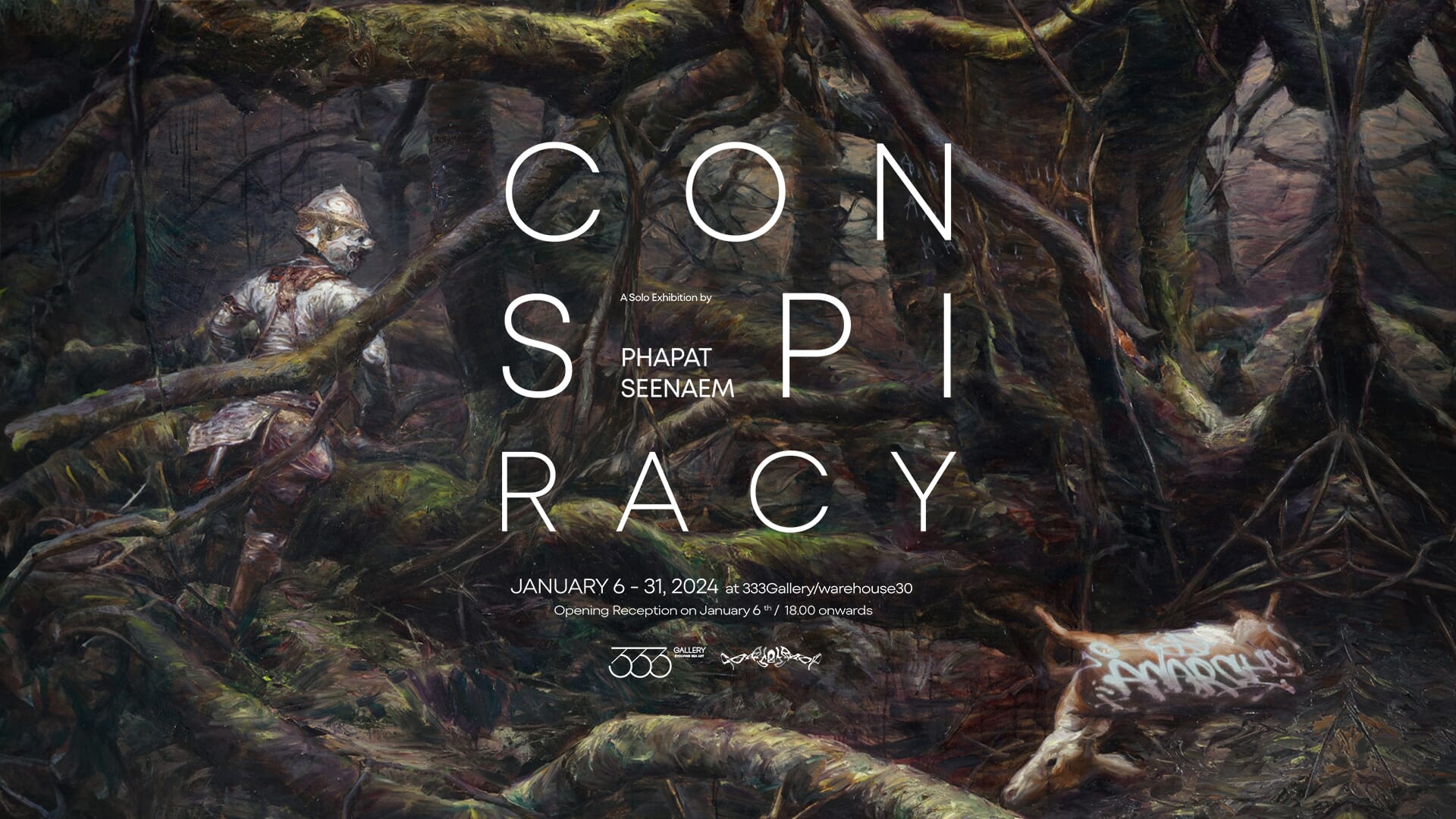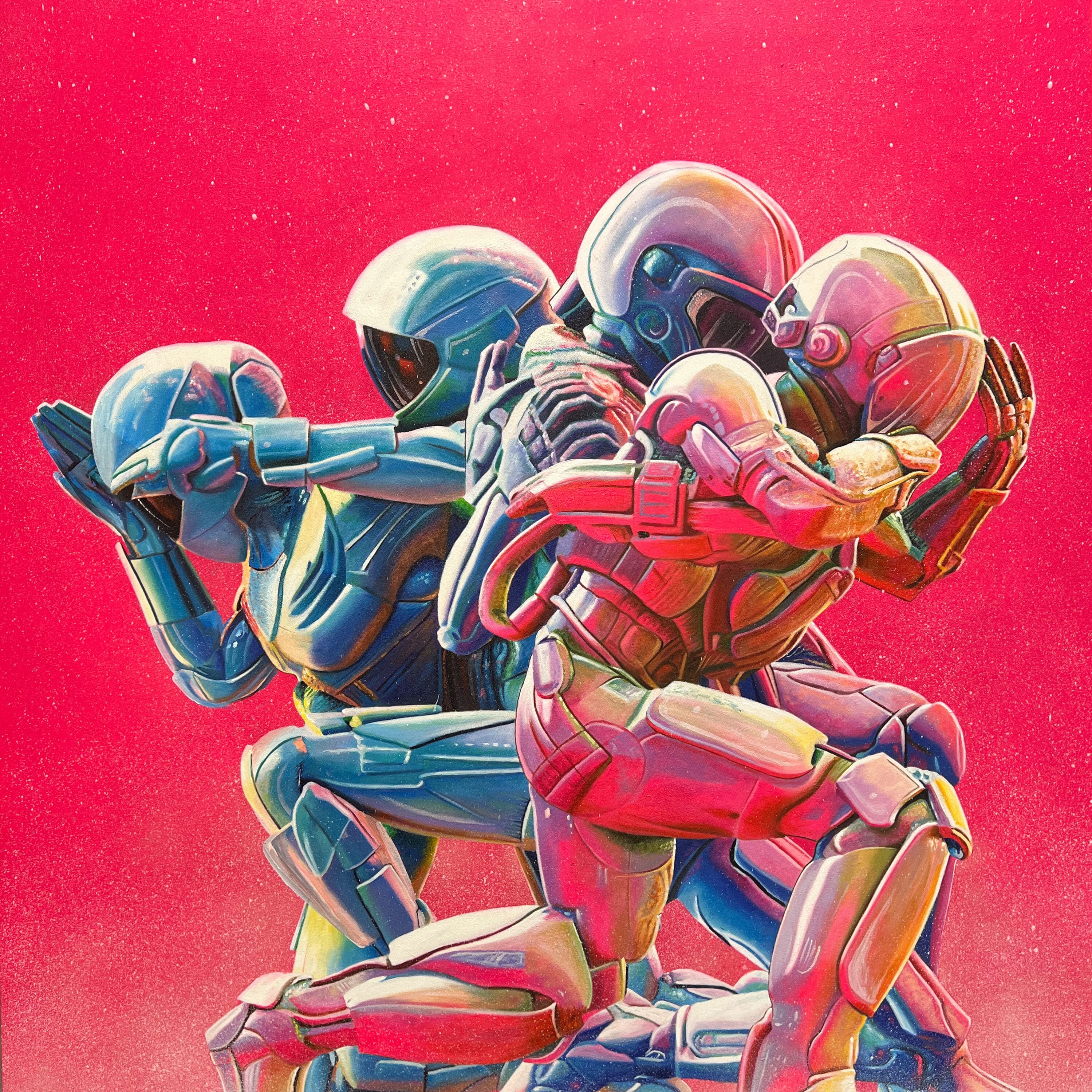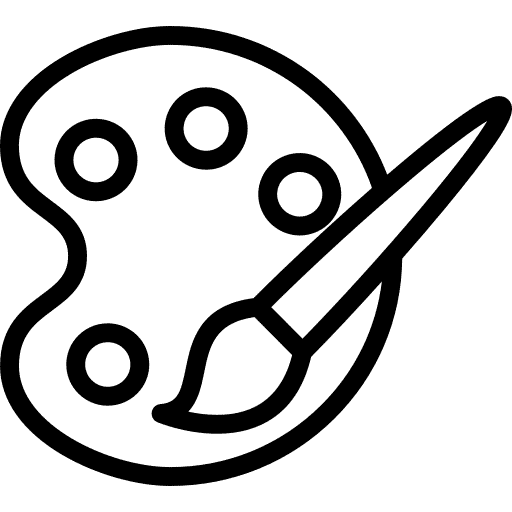Looking back at 2009, when asked about Ajarn Fua, my response was “I don’t know.” However, nowadays, before 2009, I can confidently say that I am a collector of Vietnamese art. In particular, I am recognized by the Vietnamese art circle as the first Thai individual to appreciate and promote the works of Vietnamese artists from the Indochina era, specifically during the years 1925 to 1945. I have dedicated a significant amount of time studying the biographies of these Vietnamese artists from that time period and have published over 5 books showcasing my collection. These books are available for purchase at the Vietnam Art Museum.
Given my dedication to studying and researching Vietnamese art, I saw this as an opportunity to explore the art scene in my own country. Intrigued by the potential value of these old documents, I made an appointment to see Ajarn Fua’s works with the assistance of my friend. However, upon arrival, instead of encountering beautiful paintings, I found a pile of old documents packed into two large metal cabinets. There were no actual artworks, only sketches and papers related to old temples stored in files. Initially, I hesitated and questioned the decision to acquire these old documents. Nevertheless, the merchant emphasized their importance, mentioning that any piece bearing Ajarn Fua’s signature would be highly valued among collectors and could fetch prices as high as ten thousand baht.
In the middle of 2009, a friend of mine, who is an expert on Thai antiques, informed me about another antique dealer who possessed old documents related to Ajarn Fua. Despite my lack of interest in Thai art at the time and my limited knowledge about the artist, my friend provided me with a brief biography of Ajarn Fua. I learned that Ajarn Fua was an extremely important artist in Thai art circles and held the distinction of being the first national artist of Thailand. His works were highly sought after by Thai collectors and commanded high prices in the art market.
Curiosity piqued by the potential value, I took some time to make a decision before investing in the set of documents. Eventually, I chose to acquire the collection to further study it. From the middle of 2009 onward, I spent almost a year studying Ajarn Fua’s biography and meticulously organizing the documents in the cabinet. Regrettably, I did not bring the cabinets back with me at the time, as I failed to recognize their significance.
During that year of study, I delved into Ajarn Fua’s handwriting, which proved challenging to decipher due to its cold nature. I categorized the documents into various sections, such as personal letters (including love letters and correspondence between Ajarn Fua and Khun Somthawin), numerous government documents outlining important events during the artist’s career, and travel-related papers documenting Ajarn Fua’s studies at Santiniketan via the Burma line. The collection also included original and photocopied sketches, each marked with the artist’s signature, date, and time (resembling the works of contemporary artists who create prints of their original images with their signature for collectors). These works will be detailed in subsequent chapters of my book.
The year 2010 proved significant for Ajarn Fua, as it marked the “100-year Fua Haripitak” event organized by the Ministry of Culture. A major book titled “100 Years Fua Haripitak” was published, written by Professor Pipop Budsarakamwadee. This book served as a valuable resource for my research. Additionally, two discussions on the occasion of the 100th anniversary featuring Ajarn Thepsiri Suksopha and Ajarn Sulak Sivaraksa at Mahidol University in Salaya further Fualed my interest in studying Ajarn Fua’s life.
Since obtaining this set of works in 2009, more works have gradually come my way. However, the majority of them have been paperwork. In the middle of 2014, a main set of 80 sketches became available for sale. It took over two years to negotiate the authenticity and price of these works, and by September 2016, I decided to add them to my collection as another important set.
Upon receiving these 80 significant works, along with various existing documents, I conceived the idea of organizing an exhibition to honor and showcase Ajarn Fua’s legacy. I wanted to provide interested individuals with an opportunity to view and study these sketches. I aimed to schedule the exhibition on Ajarn Fua’s birthday, April 22nd, which led to the creation of the “107 years of Chatakarn Fua Haripitak” exhibition in 2017.
The collection I possess contains enough works to comfortably hold a high-quality exhibition. However, it seemed that Ajarn Fua had a desire for me to include more important works in the showcase. Therefore, I encouraged my wife’s relative, Khun Somthawin, to visit me at the gallery on the morning of March 10, 2017, bringing along her own work to potentially contribute to the exhibition.
Tira Vanichtheeranont / Archive Collection
